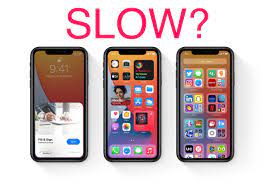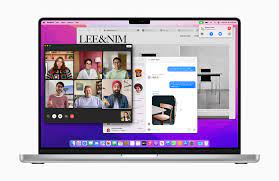During Apple’s WWDC keynote, the iPhone unveiled iOS 16, which introduced a redesigned lock screen, improved privacy and family sharing, and a host of new features for other existing apps. The update will be available to anyone with an iPhone 8 and later on September 12.
After iOS 15’s focus on productivity in 2021, this seems to be a continuation of this trend, while it focuses more on personalization thanks to the new lock screen feature. With that in mind, we compared the two versions to see what benefits iOS 16 will bring you.

iOS 15 vs. iOS 16: Lock Screen
After restarting your iPhone in iOS 16, you’ll see a different lock screen. Inspired by the way you customize your Apple Watch face, you can swipe between different lock screens with colors, fonts, and widgets.
Up to four widgets can be added, and developers can also make custom widgets for their apps once iOS 16 launches.
Compared to iOS 15, the customization is unparalleled. For years, you could just set the wallpaper and decide if the image moved as you moved your iPhone.
Animated wallpapers were introduced with the iPhone 6S in 2015, but you had to press the screen for it to animate. However, the lock screen in iOS 16 goes a step further. For example, there’s “Live Activity” that tracks sports, while notifications and Now Playing screens sit at the bottom to make those more accessible to your thumb.
iOS 15 and iOS 16: Mail
Apple‘s Mail app has been in the background for years, with third-party apps filling in the gaps. You could say that’s why users often set their third-party mail app as the default app in iOS.
However, iOS 16 is finally starting to catch up with other apps, including Schedule Send, Undo Send, and more. These Mail improvements also apply to macOS Ventura and iPadOS 16, so no user will feel left out this year once the update is released to everyone.
When you compare it to the ubiquitous Mail app in iOS 15, you realize how many cool Mail features are on the desktop. With iOS 16, it’s finally easier to manage your mail.
iOS 15 vs. iOS 16: Messages
It’s another app Apple has focused on this year, with the ability to edit or undo messages up to 15 minutes after they’ve been sent, as well as a host of collaboration features.
Since its debut in iOS 5, iMessage has allowed Apple users to message each other, similar to WhatsApp. But while Messages has been updated in recent years, such as group chats and pinned conversations, users want more of what’s already available in other messaging apps.
This is where messaging and collaboration are improved. For example, you can invite someone to work on a project in Pages or Numbers, and any activity will show up in Messages. The ability to recover deleted messages up to 30 days after they were deleted in iOS 16 is another big update this year.
iOS 15 vs. iOS 16: Photos
This is a series of improvements to Photos in iOS 16, the ability to lock albums with a passcode, duplicate photo detection, turn off featured content, and more.
There’s also a new iCloud Photos feature called iCloud Photo Library. This brings the ability to share the library with your family, photos can be taken with the camera app and will be saved directly in this folder.
iOS 16 is a small update compared to iOS 15, but it’s a series of small improvements that make a big difference, especially since these are also included in macOS Ventura and iPadOS 16.
>>>>>>>>>>>>>Apple battery









